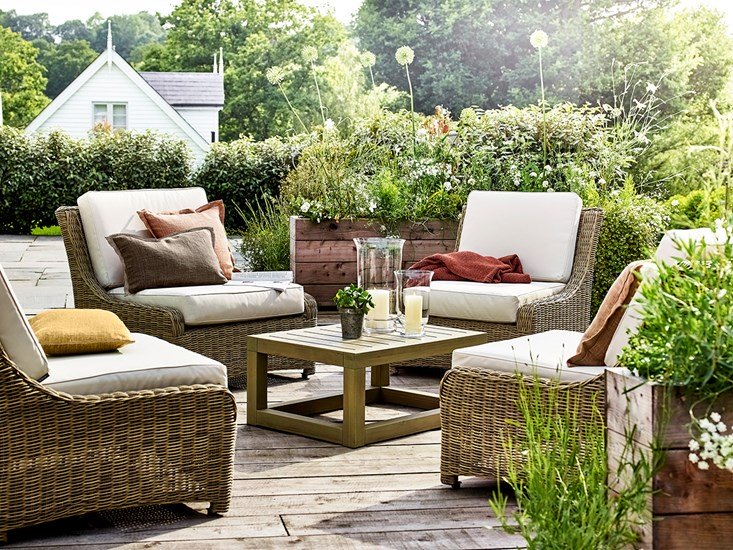
0800 377 7507
Get in touchComplete Guide on How to Clean your Garden Furniture
The word “after” has recently taken precedence in my household. My daughter makes plans for “after” Corona. The play dates she’s planning, the places she would like to travel to “after”. She is five and already in her lifetime there is a moment so momentous that there is a “before” and an “after”. This list of places she wants to visit is basically all the countries she has already visited. But I am struck by how quickly my kids have adapted to this new world order; where their previous structure and routine has been replaced by us brushing our teeth, washing our face and change only to go back into the living room. Children are the most resilient of us all. And it’s not because they are oblivious. They know. But they are in a blissful-in-between of knowing. They know enough to be pragmatic in their waiting. But not so much that they must constantly soapbox about all the ways we must remain productive and positive. My daughter makes lists for “after” but that doesn’t mean she’s not perfectly content “now”. We’re busy home-schooling our kids, but perhaps they’re the ones best equipped to teach us the way.
So, as we start Easter weekend, I will make a greater effort to be content in the here and now. scale back and not feel like I must be productive. Having said that, the weather is glorious so it was fitting to have a closer look at my garden. So I dug out some key MOLLY MAID tips to create a complete guide on how to clean your garden furniture.
Wood
Wood clearly is so elegant and fitting to its natural surroundings, but it does require upkeep and some TLC to keep it looking its best. Most furniture made of wood can be cleaned by using the following top tips, with the exception of teak.
- Clean using a warm solution of sugar soap and a scrubbing brush. For more stubborn areas, you can leave the solution on the furniture for a few minutes before shifting them with the scrubbing brush.
- Then using your hose pipe (not pressure washer) rinse off and leave to dry.
- If mildew is visible on your garden furniture, here’s an expert tip to clean it off. Mix 1 cup of any household bleach, 1 cup of washing powder and 1/2 bucket of warm water. Soak your furniture with the bleach solution and let it soak for 5 minutes (no longer). Then, simply hose off the solution and the mould, mildew or moss problem should disappear. Please take the necessary precautions when handling bleach solutions.
- Try to avoid putting any oil or sealants on new oak furniture as oils tend to make the wood go black and pick up dirt, while other finishes just sit on the surface, change the texture of the wood and need frequent maintenance. The only exception to this rule is if the wood has been exposed to the elements for more than 10 years on average, the surface grain will have opened up and will need replenishing with oils.
Teak
By contrary, teak, is a popular alternative to some hard and soft wood furniture due to its resistance to the outdoor elements. Teak doesn’t need any protective treatments that other wooden furniture needs as teak is naturally resistant to the outdoor extremes. However, there is no getting away from dust and dirt, so it still requires some care.
- To remove dirt and dust, hose it off with plain water – that is all that is required.
- To remove stubborn dirt or bird droppings for example, use warm soapy water and a non-abrasive cloth or soft sponge.
- Washing it once a week or every two weeks is usually enough to keep it clean and look inviting.
Metal
Oxidation, or rusting, tends to be the most common problem with metal furniture. Try some of the below top tips for cleaning metal garden furniture:
- Prior to cleaning, prepare the area by removing as much of the imperfection as possible using a metal polishing paste or a 1:1 solution of white vinegar and water.
- Avoid chemicals such as ammonia and trisodium phosphate (TSP); alkaline cleaners can cause oxidation.
- Hose down and wash aluminium frequently to preserve its natural lustre.
- To remove any scratch marks, use a soft cloth dampened with a nonabrasive product.
- To prevent rust, sand the rusted paint and metal down, wipe off the residue with a cloth dampened with mineral spirit. Then, use a rust-resistant primer before painting with rust-resistant paint.
- In more dramatic cases, you could consider having your wrought-iron furniture sandblasted or powder-coated for added protection.
- A way to protect the metal material after cleaning with water, is to apply a coat or two of car wax.
Plastic
Nobody likes the look of unsightly, dirty plastic garden furniture which has lost its inviting appeal, particularly if it was once sparkling white! To help restore the colour and its’ shine, try the following top tips for cleaning garden furniture:
- Mix 50ml of vinegar with 1L of warm water and wipe down furniture and hose off.
- For more stubborn stains, sprinkle some bicarbonate of soda onto a sponge and gently wipe off the stains.
- Once the furniture is dry, apply some WD-40 and polish to restore the shine. Make sure you wipe down your plastic furniture well to save yourself from staining clothing.
- Then polish with car wax to form a protective layer.
Wishing you all a safe and happy Easter!
(Image credit: Neptune UK)
